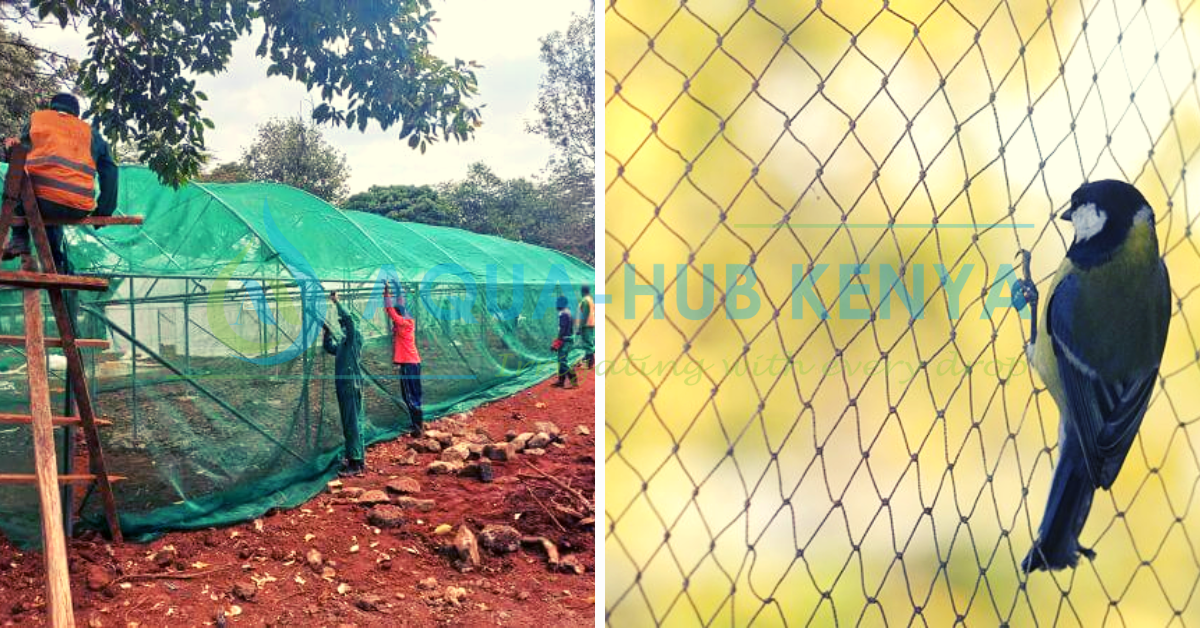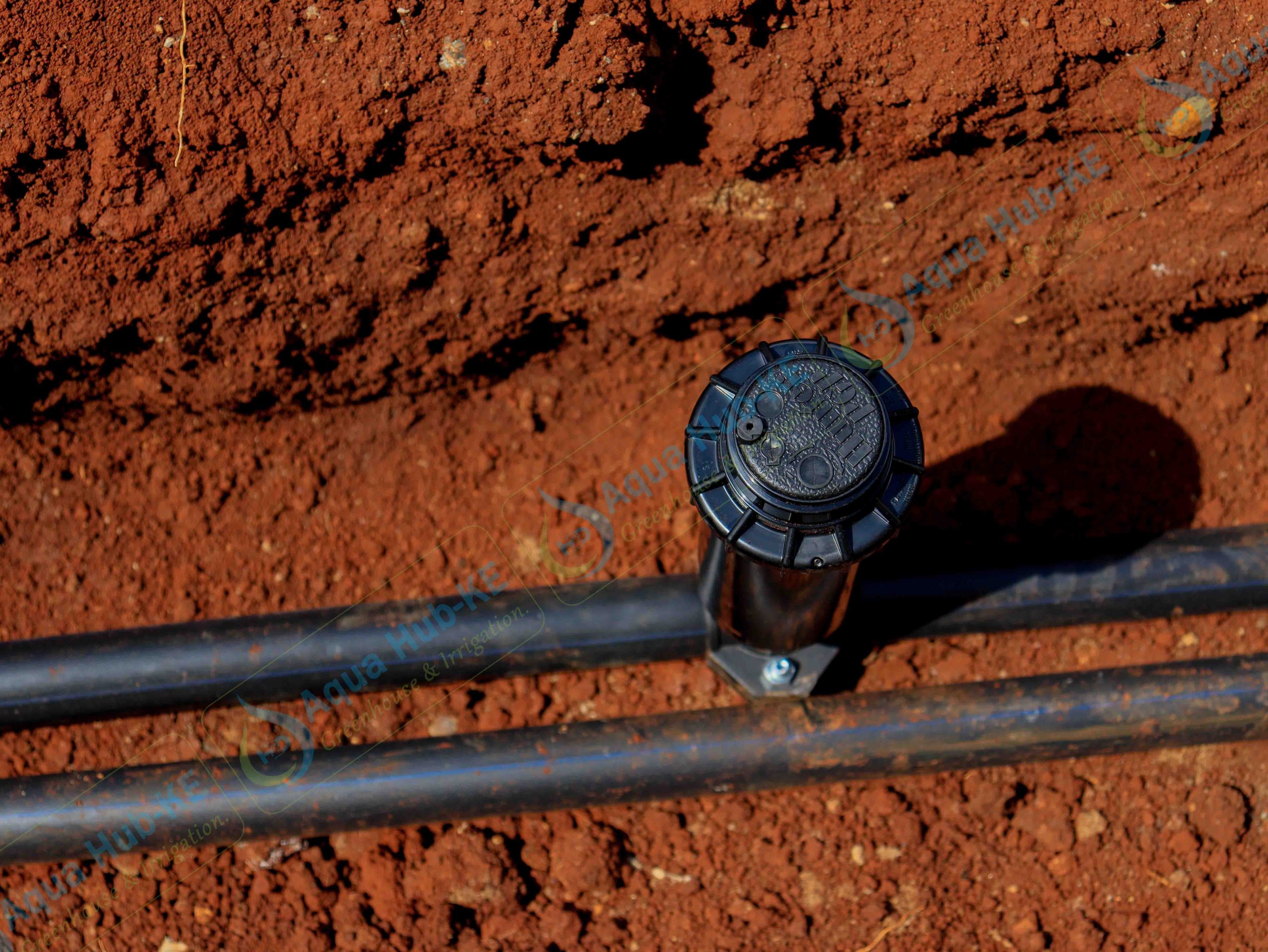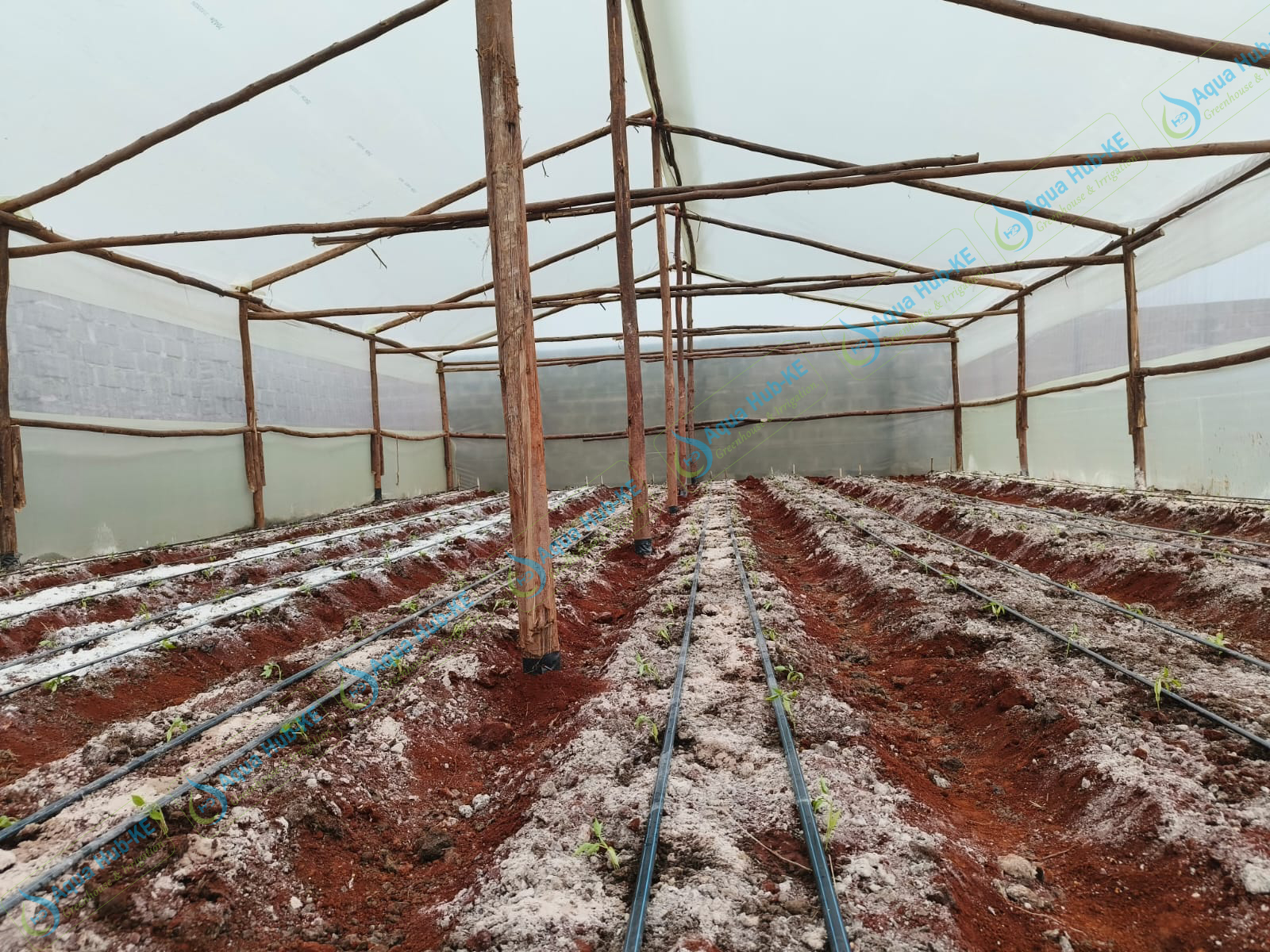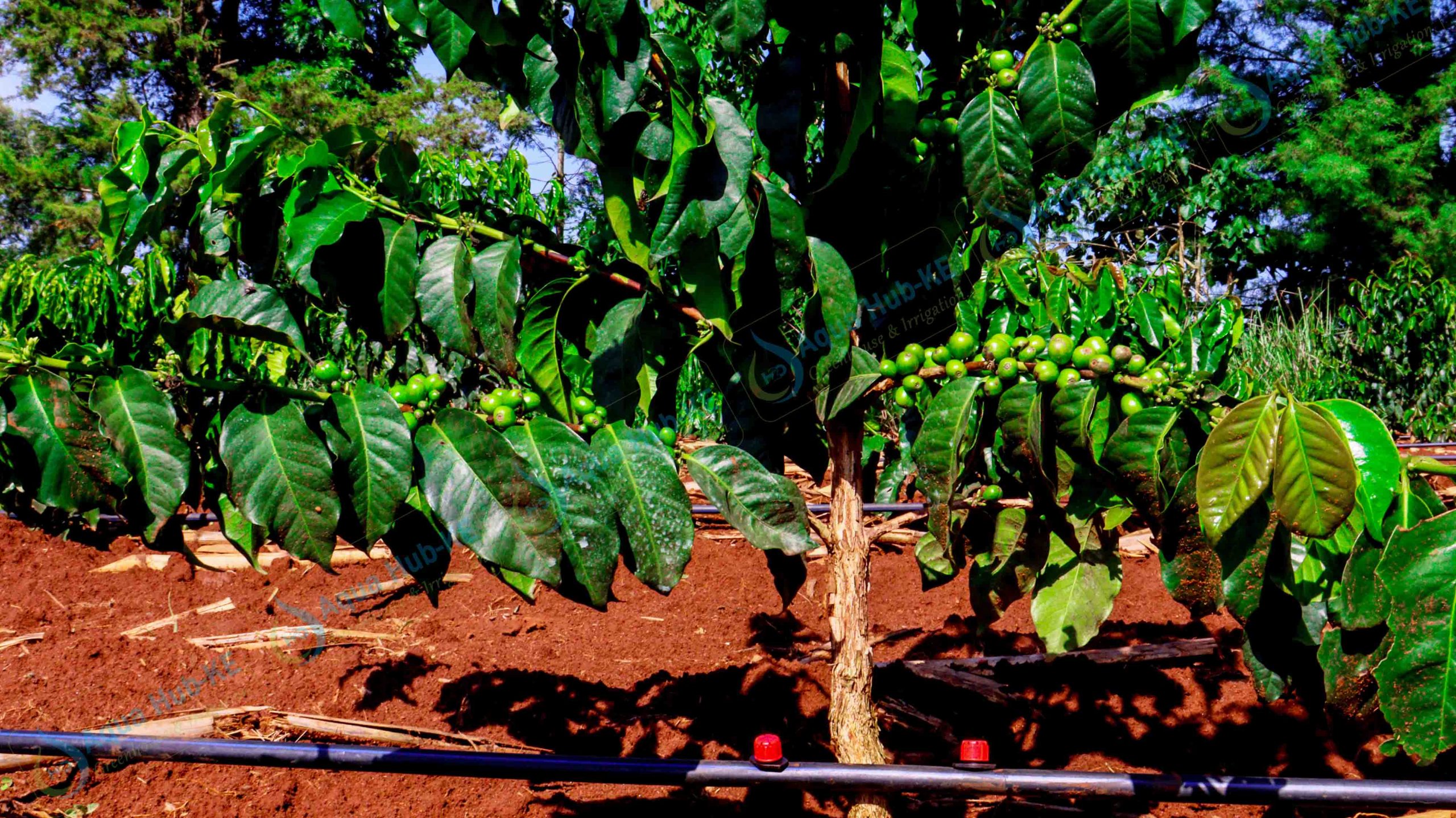The top supplier of agricultural nets in Eldoret is Aqua Hub Kenya. In this country, there are many different types of agricultural nets. Our agricultural nets are of the highest caliber and are quite economical for farmers. Generally speaking, netting refers to the use of agricultural nets. The cost-effective and environmentally friendly way to protect crops is with netting. They are shielded from insects, animals, harsh sun rays, and hail. A safe pest control strategy that is becoming acknowledged as an effective option for small-scale farmers is netting technology.
What are agricultural nets in Eldoret?
Agricultural nets in Eldoret refer to the various types of nets used in agriculture to protect crops from pests, birds, and other animals. These nets can be made of materials such as nylon or polyethylene, and come in a variety of sizes and colors to suit different crop protection needs. Farmers use these agricultural nets to shield their crops from numerous environmental dangers. High temperatures, powerful winds, too much sun, and bugs are the contributing factors.
Depending on the crop and the surrounding conditions, these nets can be employed in a variety of ways. Both small- and large-scale farmers in Kenya use these nets extensively. The advantages they offer for crops are causing them to grow in popularity. And the possibility for higher profits and dividends. These agricultural nets range in price depending on a number of variables. Depending on what you want to perform as a farmer, you will choose the agricultural net you will employ. Every kind of net has a specific purpose.
What types of agricultural nets in Eldoret?
In Kenya, various types of agricultural nets are employed, some of which include:
Shade Nets in Eldoret
Crops are shaded by a particular kind of agricultural net called a shade net. The crops include horticultural ones like coffee and tea that are delicate to too much sunlight. Additionally, they can be utilized to shield crops from extreme heat, powerful winds, and torrential rain.
Shade percentages on shadow nets often range from lower to higher, with lower percentages offering more sunshine and higher percentages offering greater shade. The crop and the particular growing circumstances will determine the optimum shade proportion. For delicate crops, such as seedlings, shade nets with a higher % may be utilized. While for more developed plants, lesser amounts may be employed.
- Shade nets can provide various benefits to crops, including:
- Improving crop yields and quality by reducing temperature stress and evapotranspiration.
- Pesticides are being used less frequently.
- Increasing the color, flavor, and size of the fruits.
- Lowering the risk of sunburn and other heat-related crop damage
- Increasing soil water retention.
But it’s important to remember that if not used appropriately, shade netting can sometimes be harmful. These include drastically lowering the light level and resulting in a stunted crop. Or by making the crop overly damp and encouraging the spread of disease. It is advised to speak with an agronomist or other specialist before installing the shade nets in order to reduce those negative effects. Additionally, to routinely assess the state of the environment and agricultural growth.
Insect Nets in Eldoret
Insect nets are a sort of agricultural net that is used to keep pests like aphids, thrips, and whiteflies away from crops. Those that can harm the crop and reduce output. They can also be employed to keep other hazardous insects and small animals away from crops. Different insect net mesh sizes are commonly available, with smaller mesh sizes being used to defend against smaller pests. Additionally, bigger mesh sizes are employed to guard against bigger pests. The crop and the particular pests present in the area will determine the best mesh size.
Polyethylene or polypropylene that has been UV-stabilized is frequently used to make insect nets. As a result, they are robust and weather- and UV-resistant. They are available in various sizes and can be used for a variety of crops, including field crops, fruits, vegetables, flowers, and vegetables.
Several advantages of using insect nets for crops include:
- Reducing the use of chemical pesticides, which can help farmers save money while also protecting the environment.
- Improving agricultural yields and quality by decreasing pest damage
- Protecting the crop from pest-transmitted diseases
- lowering the threat of insect-borne infections
Bird Nets in Eldoret
Bird nets are a form of agricultural net used to protect crops from birds including starlings, sparrows, and weaver birds, which can cause considerable crop damage and diminish yields. They can also be used to keep other birds out of crops that are known to cause damage. Bird nets are normally available in a variety of mesh sizes, with smaller mesh sizes protecting against smaller birds and bigger mesh sizes protecting against larger birds. The optimal mesh size will be determined by the crop and the unique birds in the area.
Typically, UV-stabilized polyethylene or polypropylene is used to produce bird nets, making them strong and resistant to UV light, wind, and rain. They are available in various sizes and can be used for a variety of crops, including field crops, fruits, vegetables, flowers, and vegetables.
Several advantages of using bird nets for crops include:
- Reducing bird damage, which can enhance crop yields and quality.
- Farmers also save money by decreasing the need for other bird control technologies like scarers and traps.
- Reducing the danger of bird-borne disease transmission.
What factors should be considered when purchasing agricultural nets?
- Crop type: Because different crops have varying needs for light, temperature, and insect protection, the agricultural net should be selected accordingly.
- Environmental conditions: When selecting agricultural nets, consider the climate and weather patterns of the location, as nets built for one place may not be suited for another with distinct environmental conditions.
- Pest and bird population: When selecting agricultural nets, consider the specific pests and birds present in the area, as different nets may be more successful against different types of pests and birds.
- Mesh size: Depending on the size of the birds and pests that need to be kept away from the crop, the mesh size of the net should also be chosen.
- Durability: A long-lasting material that can survive the effects of the environment should be used to create the agricultural net.
- UV stabilization is also necessary to prevent deterioration and extend the lifespan of the agricultural net.
- Cost: The price of the agricultural net and the cost of maintaining it should also be taken into account.
Aqua Hub Kenya will be able to provide particular recommendations for your case. It is also critical to ensure that the agricultural nets are correctly erected and maintained on a regular basis to guarantee that they continue to provide the essential crop protection.




